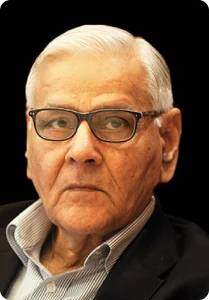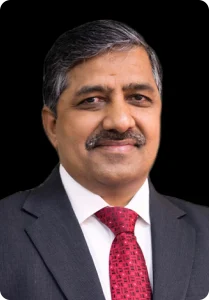Listen to Pankaj Kalra, CEO, Essar Oil & Gas Exploration & Production Ltd., discuss the pivotal role of Coal Bed Methane (CBM) in shaping India’s cleaner, more sustainable, and self-reliant energy future.
Podcast Transcript
Welcome to CII Podcasts.
Hello and welcome to another interesting episode of the CII Podcasts. The topic for today’s discussion is Coal Bed Methane – Road towards a greener future. India’s energy landscape is evolving rapidly, with a growing push toward cleaner, more sustainable sources.
In this episode, we will explore the critical role of Coal Bed Methane, or CBM for short, in India’s energy transition. From its potential to reduce energy imports, increase the share of natural gas in the energy mix, and lower carbon emissions, CBM presents a promising opportunity for a greener and more self-reliant future. To discuss this today, we have with us Pankaj Kalra, CEO, Essar Oil & Gas Exploration & Production Ltd.
He has a rich experience in this field of over 23 years and a demonstrated track record of working across multiple sectors. His functional skillset includes expertise in M&A, fundraising, accounting, internal controls, procurement, and financial modelling. So thank you so much for making the time for us today on the podcast, Pankaj.
Thank you for joining the CII Podcast.
[Pankaj Kalra]
Thank you, Jayant. It’s a pleasure to be here on this platform.
[Jayant]
Thank you. We’re looking forward to the conversation today. So, you know, as I was mentioning in the introduction, and if I could start with a kind of a, you know, broad setting question that will take us through this discussion today.
India’s energy sector is undergoing significant transformation. So can you provide an overview of the current energy mix? And through that, give us an idea of the growing role of natural gas.
[Pankaj Kalra]
So as you know, India currently occupies a very central and a key position in global energy gas. You would be surprised that in 2024 alone, it accounted for approximately 25% of the world’s growth in oil demand. And with its oil consumption reaching almost 5.1 million barrels a day, this almost reflects a 3.9% increase year on year. And despite the significant growth, India continues to rely heavily on imports, sourcing over 85% of its crude oil economy. Now this dependence underscores the imperative to enhance domestic energy security, which remains a priority for our country. As India pursues its net zero emission targets by 2070, natural gas is emerging as a pivotal and a transient fuel.
It offers a balanced solution to the energy dilemma by addressing the three core objectives of sustainability, reliability, and affordability. From an environment perspective, natural gas emits only 20% and around less CO2 than solid fossil fuels, and about 30% less than the liquid fuels, positioning itself as a clear and a much more cleaner alternative. This, however, provides much greater and much larger operation flexibility, which enables it to support the integration of intermittent renewable energy sources such as solar and wind.
This also remains cost effective and scalable, making it a very, very pragmatic choice for India’s evolving energy landscape. Now let me come to what really, you know, the other question that you asked, one of the key drivers of the natural gas map. The key and the foremost remains the CGD, the city gas distribution.
Now this sector is poised for a very substantial growth, propelled by the government’s own initiatives, promoting the adoption of compressed natural gas and pipe natural gas. However, the pace of infrastructure development and gas distribution policies will influence the demand of this sector. Then comes in the renewable integration.
The natural gas serves as a vital balancing fuel, ensuring grid stability amid the variable generation for renewable sources. Then comes in the industrial and refining sector, which is one of the key sectors where the natural gas demand grows. This sector has exhibited a very strong growth in that with an increase of approximately 70 percent and 15 percent year on year, respectively.
So over the last few years, it has grown by almost 70 and 15 percent. This is a very substantial growth by itself. The fourth larger sector is the transportation.
This is growing largely because of adoption of LNG-powered vehicles and gas-based freight transportation, contributing to a much cleaner mobility solution. Now, what is the demand outlook and the supply constraints? The natural demand in India grew by almost 10 percent in the year 2024 and is predicted to reach almost 103 billion cubic meters by 2050, representing a 60 percent increase from the current consumption levels.
Domestic production remains constrained at around 35 billion cubic meters, largely due to mature gas fields with declining output and the absence of significant new discoveries in the near term. Consequently, LNG imports are anticipated to rise. However, with more than 60 percent of India’s LNG transiting through the geopolitically sensitive state of Hormuz, which actually took a very large-scale news attention because of the ongoing dispute that you would have seen yourselves between the state of Israel and Iran.
Thus, diversifying supply routes is imperative to mitigate the risk. Now, what are the opportunities and enablers for our growth? Looking ahead, India’s energy sector represents both challenges and opportunity.
The plan is to increase its installed capacities of power from nearly 900 gigawatts by 2032, nearly doubling the current capacity from the current 475 gigawatts. So, two-fold increase over the next seven years is what we are all aligned for. And the natural gas is expected to play a critical transitional and stabilizing role alongside the renewables.
So, with all this, how do we conclude? We conclude that India continues to navigate its dual challenge of rising energy demand and long-term sustainability commitments. Natural gas stands out as a scalable, flexible, and a cleaner energy source.
[Jayant]
Okay, thank you very much for that answer. And I think you’ve given a good sort of overview of the energy sector, the current energy mix, the kind of sectors it’s used in the most, and kind of woven in the role of natural gas into it very well. In terms of where we are, where we need to go.
So, going on to the next question. Coal bed methane presents a unique opportunity in India’s energy strategy. So, what makes a CBM a valuable resource?
And how does it really contribute to reducing our energy import bill, which you spoke about so eloquently in your last answer? And what can be its environmental impact?
[Pankaj Kalra]
You know, Jayant, you’ll be surprised. CBM is a very, very untapped and a very undermined kind of resource, which particularly in our Indian subcontinent remains. You’ll be surprised to see the kind of momentous growth this particular sector is seeing in the other subcontinents like Australia and China.
Now, what does CBM offer to us? It really unlocks a very unique and indigenous energy resource. It holds a very distinct position within our overall energy portfolio as it is locally abundant, unconditional gas resource, and it has the potential to support the nation’s goal of energy security, economic growth, and environmental sustainability.
India, actually, it is estimated that we have 92 trillion cubic feet of in-place CBM reserves, which are largely concentrated in coal-rich states like Jharkhand, Madhya Pradesh, Chhattisgarh, and West Bengal. The government of India has really done some excellent work over the last one decade. We have announced 15 CBM blocks, which are at different stages of activity.
Out of 15, 6 are in production, 2 in development, and 7 are under exploration. CBM currently contributes about 2.2 million standard cubic meters of gas per day, which is roughly around 2% of India’s overall production. We remain the pioneers and the largest producer of coal bed methane gas, and we take massive amount of pride in doing that.
And there are other operators like Reliance and GECL, which are towards this sector. You know, some of the key benefits which CBM brings on table, and which are very, very strategic from an Indian subcontinent, are that it really helps upon improving and reducing the import dependence. It provides a very legitimate domestic source of methane.
CBM resource, it aligns with the imported RLNG, which constitutes nearly half of India’s natural gas consumption, and largely depends upon the supply routes, which are very, very sensitive as we talk about in the state of Hormuz, in my earlier question, in my earlier answer to you. It remains one of the most environment-friendly. It is very advantageous to the environment on a holistic level.
It serves as a cleanest form of fuel alternative to the conventional liquid and solid fossil fuels and industrial sectors, thereby contributing to the emission reductions and improving the air quality. Then it also helps in regional and socio-economic impact. The development of CBM resources predominate in eastern part of India.
It really promotes the local environment, expands the energy access, supports the growth of micro and SMEs. Then, from an economic impact standpoint also, by harnessing only 10% of India’s recoverable CBM reserves, it has the potential to reduce the country’s energy import rate by almost $3 billion annually, which really highlights CBM’s economic significance. So overall, CBM really represents a strategic indigenous energy source that complements India’s broader energy transition.
[Jayant]
Right. Thank you once again for that answer. And, you know, just to expand on that, you spoke very eloquently again about CBM and the opportunities it represents.
Is there a case for India to adopt global best practices from other countries in CBM regulation and development?
[Pankaj Kalra]
Absolutely. You know, in fact, there’s not just a case, but a very compelling opportunity for India to align its CBM regulation and development with the global best. As we embark upon our profound energy transformation, CBM can emerge as a vital resource to reduce import dependence, strengthen local economies, and accelerate the transition towards cleaner fuels.
However, unlocking all its future potential requires complementing India’s vast geological resources with robust, transparent, and internationally benchmarked policy and regulatory framework. I mean, a very logical question is what can India do? India, as I mentioned, holds one of the largest CBM reserves, which is almost 92 TCFs of in-place volumes, which when converted translates to almost 9 TCFs of recoverable resource.
But all this is not aligned to the current limited production of 2.2 million cubic meters per day. Adopting all the best practices which one has seen globally, it can really change the trajectory that it is going at with all we need is streamlining all the clearances under a unified hydrocarbon code and consolidating all the upstream regulations to reduce administrative complexity. We can even facilitate access to finance for unconventional assets through promotion of public-private partnerships.
You know, there could be a mechanism to fast-track land acquisition and right of use, particularly for the CBM-rich, coal-bearing states. We can also introduce very, very targeted fiscal incentives, such as royalty holidays, PLIs, R&D, tax offsets, drawing on successful frameworks from successful countries like Australia, which had issued very, very attractive gas grants and China’s exploration subsidies. And we could also simplify and digitize environment and forest clearances and make the workflow very seamless with long-term validity aligned to project life cycles to ensure regulatory efficiency and certainty.
You know, you’d be surprised that countries even like Brazil, Mozambique, Egypt have already embraced and simplified very expeditious licensing system backed by arbitration-based investor protections. So this is a very right time for India to adopt all these global practices. Unlocking even 10% of our CBM reserves has a potential, as I mentioned, to reduce our import bill by over USD 3 billion annually.
And it offers a very, very unique opportunity of creating employment, stimulate local economies, and provide very, very cleaner fuel to industries and urban gas networks. At Essar, we are fully committed to supporting this journey, offering technical expertise, sharing international case studies, and fostering collaborative solutions. We firmly believe that India’s unconventional gas sector is not just viable, it is more and more vital to the country’s energy security and sustainable growth.
[Jayant]
Okay, thank you. Thank you once again. And just, you know, a follow up once again.
So unconventional gas extraction, of course, comes with unique technical challenges. So what innovations or technology interventions would you advocate, would you have already been involved with that really improve CBM output?
[Pankaj Kalra]
You know, at Essar, we have really embraced one of the best known technologies cutting edge, you know, any way that it has been experienced across the globe, we have tried to imbibe and embrace that technology, bring it to India. And this has really helped all these strategic interventions to overcome the challenges that one has encountered in enhancing the CBM output. In our drilling operations, we started with directional wells, and now we are evaluating horizontal and multilateral wells designed to maximize coal seam contact, thereby increasing the gas recovery.
We have continuously analyzed and improved our hydraulic fracturing, enhanced simulation methods to enhance effectiveness and improve permeability. Even on the operational front, the use of data, real time data analytics, and predictive maintenance are by the continuous monitoring systems enabled us to optimize production efficiency, reduce downtime, and lower operating costs. We’re actually also looking at evaluating the benefits of introducing AI and predictive models to improve asset performance while maintaining safety and environmental standards.
We have one of the largest RO plants to treat the water and technologies to handle water treatment, recycle the treated water to minimize the impact on the environment. Together, all these innovations position Essar at the forefront of technology driven CBM development, which really helps in unlocking the India unconventional gas potential in a very sustainable and efficient manner.
[Jayant]
Yeah, and you know, looking ahead, just projecting ahead, what is your outlook for the CBM sector in India, really over the next five years? And how do you see Essar Oil & Gas really contributing to this growth?
[Pankaj Kalra]
See, Essar, as I have mentioned, has been a true pioneer in India’s CBM journey. Our flagship asset, which is Raniganj East CBM Block in West Bengal, stands as the most developed CBM field of India, and a blueprint of how unconventional gas can drive both economic and environmental progress. We have been one of the leaders in production.
We currently contribute over 50% of India’s overall CBM output, with more than 90 billion cubic feet of cumulative production till date. We are one of the first Indian company to cross the milestone of 1 million cubic meters of gas per day of CBM production, positioning us as the country’s largest investor and producer in this sector. We have built more than 450 wells, and the Ranganj Block is India’s most advanced CBM asset, boasting established reserves exceeding 1 trillion cubic feet with 12 TCF of in-place resources.
You know, our first and foremost target is to contribute at least 5% of India’s natural gas production in the near term. Excellent combination of both cutting-edge technology and a slew of strategic initiatives which we have taken over the years. We maintain one of the lowest operating expenses among CBM producers in Asia, and in fact globally, by leveraging our remote field monitoring, AI-powered predictive diagnostics, and comprehensive digitization of our processes.
Our EBITDA margins consistently hover around 75%, placing us among the most profitable players in the exploration and production space.
[Jayant]
Okay, thank you. Thank you once again, Pankaj, for that very very well thought out answer. And you know, just as we are kind of wrapping up the discussion for today, CII, the Confederation of Indian Industry, plays a pivotal role in, you know, shaping policy and fostering industry collaboration, of course.
So how do you think CII can support the growth of the CBM sector in India going forward?
[Pankaj Kalra]
Jayant, as I mentioned, you know, over the last few minutes that CBM is immensely potential to become a strategic enabler for India’s energy transition. You know, it offers one of the most cleanest and the best known alternative to conventional fossil fuel. However, this potential can only be realized if there is a concerted and collaborative effort across multiple stakeholders.
It cannot be a unique and a very single-handed activity driven only from the company side. So towards that, I think CII, Confederation of Indian Industry, is uniquely positioned to facilitate this collective action. By leveraging CII’s influence, it can play a pivotal role in shaping governmental policies that create an enabling environment for CBM growth.
It can also attract much-needed capital investment by fostering confidence among investors and promoting public-private partnerships. You know, furthermore, CII serves as a very, very critical platform for sharing best global practices and innovations, helping the Indian industry to adopt proven technologies and business models. All the efforts CII brings in building a compelling narrative around the cleaner energy sources such as CBM are essential to garner broader industry and public support.
We deeply value CII’s role as a strategic partner and an ally in advancing India’s gas-based economy and supporting the country’s journey towards sustainable energy security.
[Jayant]
Okay, thank you. And on that note, we’ll end the discussion for today. I’d like to thank you, Pankaj, for joining us, for sharing your insights and knowledge on this subject.
And we hope to hear from you again soon. Thank you for joining us today.
[Pankaj Kalra]
Thank you, Jayant. As mentioned, it was a pleasure indeed to be a part of this platform. Thank you once again.
[Jayant]
Thank you for listening to CII Podcasts.















































